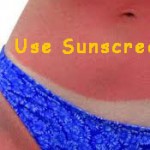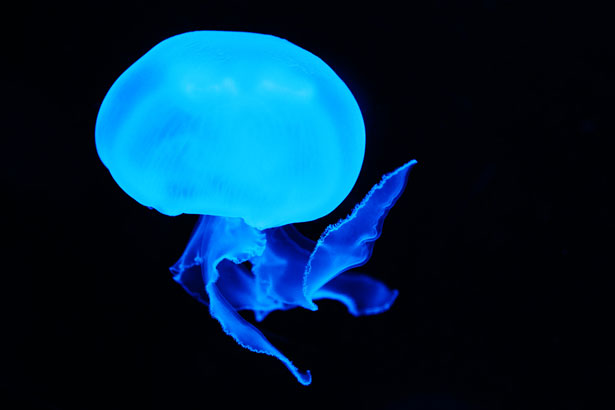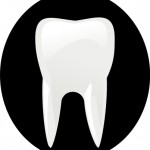Archive for June, 2013
Do You Need Stitches?
Posted by: | CommentsWhat type of cuts or wounds would require stitches for proper first aid?
Your first priority is to always stop any bleeding. Make sure your protected by wearing a set of gloves and use clean dressings. Start by applying direct pressure upon the wound site. Elevating the wound above the heart is no longer a recommended treatment for bleeding by the American Heart Association.
Clean the wound and remove any dirt or debris. Generally plain soap and water work best. Wounds should be addressed within 8 hours, though in certain situations stitches can be administered up to 24 hours. The longer the delay the higher probability of a bacterial infection, will set in. So it is best to get medical attention as soon as reasonably possible.
Now that the bleeding has stopped and the wound has been cleaned, let’s look for certain signs that would indicate sutures or stitches would be required. The following are wounds or cuts that most likely will need the assistance of stitches:
1. Any cut that is deep where muscle or yellow fatty tissue is visible.
2. Wounds 1 inch or longer in length.
3. Cuts around joints, where the movement of the joint would prevent proper healing.
4. Jagged or gaping wounds.
5. Torn sections with either an open flap or three sides torn away.
5. Cuts to the face or head.
The emergency room is well equipped to handle cuts and wounds. These doctors put in stitches several times a day and are well versed in the process, but cuts to the face should be treated by a plastic surgeon to reduce the possibility of excessive scaring.
Stitches can remain in place from 5 to 14 days depending upon the location of the wound. Always keep stitches dry for the first 24 hours to prevent infections. Afterward immediately dry the affected area after bathing. Clean your stitches twice a day and apply an antibiotic ointment. If pus, increased redness and swelling occur or if the wound begins to smell bad, the wound maybe infected and see your physician immediately.
Darkside of Sunscreen
Posted by: | CommentsA study by the CDC shows that 97% of all Americans are contaminated with a toxic chemical called oxybenzone (benzophenone-3, BP-3). Oxybenzone is an ingredient found in many of the most popular sunscreens. This chemical is primarily used to absorb UV-ultraviolet rays.
Oxybenzone is a derivative of benzophenone, which is known to attack DNA when illuminated. This organic compound penetrates into the skin and acts as a photosensitizer, where it increases the development of free radicals under illumination. These free radicals increase the pre-mature aging of the skin while also becoming a photocarcinogen.
Though at first glance this may seem a significant health hazard, Dr. Calafat of the CDC and the senior authors of the CDC study states, “the presence of a chemical in the body, at the levels that we saw, doesn’t mean that chemical is causing adverse health effects.” Also John Bailey, chief scientist of the Personal Care Products Council, a trade association representing sunscreen and other cosmetic manufacturers says, “these are very, very low levels, below levels that may be showing effects in animal or cell structure testing.
The FDA does not actually test or approve sunscreen products. It lets the industry monitor itself and acts as a penalizing or police force when a health hazard arises, which means that people have already become sick or suffered the ill effects of a product before any actions are taken.
What we do know is that UV radiation from the sun damages our skin and is the leading cause of skin cancer. Over one million new skin cancers were reported in 2007. It is prudent to wear some sort of protection when performing activities outdoors. The EWG suggests that mineral sunscreens have the best safety profile of today’s choices. They are stable in sunlight and do not appear to penetrate the skin. They offer UVA protection, which is sorely lacking in most of today’s sunscreen products.
Treating Jellyfish Stings
Posted by: | CommentsWith summer approaching and more activities at the beach, the chances increase of coming in contact with jellyfish. Jellyfish stings can cause immediate pain and burning for several hours. Raised, red welts develop along the site of the stings, which may look as if you have been hit with a whip. Unlike what you see on movies and television shows, urinating on jellyfish stings is not the recommend treatment. In fact, urinating upon the site can cause additional stings, bacterial infections and STDs.
Never rub the affected area with your unprotected hands. The remaining tentacles can attach to your hands and cause additional stings and pain. Don’t flush with fresh water, urine, gasoline or turpentine, this will stimulate the tentacles to release even more stings and poison.
It is suggested to use a solution of vinegar and warm water to the site to prevent further stings. If vinegar is not available, flush the effect area with copious amounts of salt water. Pick off the remaining tentacles with a stick or your hand protected by a towel or glove. If it is available, apply a lather of shaving cream or soap, or a paste of baking soda, flour, or talc, to the skin. The stinging cells will stick to the shaving cream or paste and can then be removed easily by scrapping off with the edge of a credit card. You might want to consider creating a beach first aid kit and add a small bottle of vinegar, a can of shaving cream and talc to your other first aid items.
Continue to closely observe the victim for any signs of a serious allergic reaction. Any swelling of the neck, face, tongue, developing hives and skin rashes or difficulty in breathing could be the beginning signs of anaphylactic shock and should be treated by a medical professional immediately.
Dangers of Summer Lightning
Posted by: | CommentsDid you know the highest number of people being struck by lightning occurs in the summer? A lightning strike has the temperature of 50,000 degrees Fahrenheit which is hotter than the surface of the Sun, but fortunately most people who are hit by lightning survive. Less than 10% die each year from a lightning strike, still approximately 58 people do. Even though most don’t die when struck by lightning, they do deal with severe and long term effects.
Lightning can travel up to 10 miles from a storm. If you can hear thunder you are in an area where you can be hit by lightning. If you feel your hair beginning to stand, this is a bad sign. Seek shelter immediately, but stay away from trees and metal objects such as a shed. Get low and stay low, do not become the highest surface around.
The best shelter is in a house. Realize you can still be in harms way. Lightning can travel through windows, doors and wires. So stay away from the windows or doors and do not use the telephone. Most lightning injuries inside a home come from people talking on the phone where the lightning travels through the wires of the phone.
Best place in your home is the basement or a closet. Bathrooms have a lot of metal piping which the electricity can travel. Lightning doesn’t just come from thunderstorms. Volcanic eruptions, forest fires, hurricanes and nuclear detonations can all produce lightning.
If someone is hit by lightning, realize they are not full of electricity. You can touch them without getting harmed. Check to make sure they are still breathing. If not breathing, moving or coughing, begin CPR.
Choking and Alone
Posted by: | CommentsIf you begin to choke and there is nobody around to offer assistance, you can perform abdominal thrust upon yourself. Either by using your own fist to apply pressure in the same manner as the Heimlich maneuver or you can use an immobile object such as the back of a chair, side of a table or kitchen counter.
Using the Heimlich maneuver on yourself, make a fist with one hand and place the thumb side of the fist against your stomach, just above the bellybutton. The knuckles of your fist should be pointing upwards towards the sky. Clasp your fist with your other hand and forcefully thrust your fist inwards and upwards. This thrusting action creates pressure of the diaphragm, which compresses the lungs, forcing air out of the lungs quickly to dislodge the object stuck in the trachea or air-passage. Continue thrust until the object is relieved.
If you use an immobile object, position yourself in front of the chair or table, lean forward to create a 45 degree angle. Now drop yourself straight down forcefully, just above the bellybutton. Continue thrusting until the object is relieved.
For all thrusts begin with moderate force. If needed, increase the amount of force with each subsequent thrust until the object is relieved. You should be seen by a physician even if the object was dislodged. Though it is not common, internal injures have occurred. If any signs of shock begin to manifest, call 911 immediately.
Energy and Sports Drinks Are Destroying Your Teeth
Posted by: | CommentsAn increase in tooth sensitivity in teenagers and young adolescent has promoted a new study on the effects sports and energy drinks have on your mouth. This new study concluded that the high acidity levels of sports and energy drinks can cause irreversible damage to tooth enamel.
Researchers found that the high acidity levels of most of sports and energy drinks essentially bathed the teeth in a bath of acid. After just 5 days of testing, they found signs of erosion and irreversible enamel damage. Tooth enamel is not regenerated and once lost it is gone forever. With more than 62% of teens consuming at least 1 of these drinks each day, dentists are finding an increase in decay and fillings for their patients.
Most teenagers when questioned felt that consuming a sport or energy drink was considered much better than drinking a soda and were surprised to learn the damaging effect these types of fluids can have on their teeth.
The best preventative measures would be to remove sports and energy drinks from your diet. If you select to continue using these products, consider reducing the number of drinks you consume and immediately rinse your mouth with water after consuming a beverage. This will help reduce the residual acid build up in your mouth. Also chewing gum of the sugar-free variety helps increase saliva and returns your mouth to its natural acidity levels.
Lastly, refrain from brushing your teeth for at least 1 hour after consumption. Brushing could distribute the acids to other portions of your mouth and increase erosion. Take care of your teeth and they will take care of you and see your dentist regularly.













